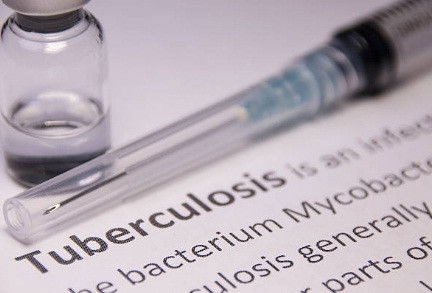America
Body's response to different strains of TB could affect transmission

New York, April 17
Two strains of the bacterium causing tuberculosis have only minor genetic differences but attack the lungs in a completely different fashion, says a new study.
The findings, published in the journal Nature Communications, may help break the cycle of rapid transmission of TB, the second-leading infectious killer in the world after Covid-19, according to the World Health Organisation.
"These findings implicate strain differences as having an important effect on the response of lung alveolar macrophages and how tuberculosis manifests itself in the body and how it is transmitted," said researcher Padmini Salgame fromARutgers University in the US.
To better understand transmission and how it relates to treatment outcomes, the researchers focused on the impact these two strains of Mycobacterium tuberculosis have on the lungs.
Though the strains differ slightly in their gene sequences, one is regarded as "high transmission" because it spreads easily and the second as "low transmission" because it does not infect as readily. TB bacteria are spread through the air when persons with TB disease in their lungs cough, speak or even sing.
Using strains identified in a collaborative study with researchers comparing "high transmission" and "low transmission" households of people with TB, the scientists studied the immune pathways that the pathogen triggered in the lungs of the infected mice.
In mice infected with the high transmission strain, their lungs quickly formed clumps of immune cells known as granulomas that encased the invading bacteria, stopping the development of a more virulent disease.
In most cases, the granulomas broke down eventually, spilling their contents. Researchers believe that if the escaped bacteria are close enough to the bronchial airway, they could be expelled into the air as infectious aerosols.
"By inducing granulomas with the potential to develop into cavitary lesions that aids bacterial escape into the airways, high transmission M. tuberculosis strains are poised for greater transmissibility," said Salgame.
In mice infected with the low transmission strain, the invading bacteria were slow to activate the lung alveolar macrophages and ended up producing patches of inflammation within the lungs that did not allow the bacteria to escape into airways and allowed them to conglomerate and intensify the infection, the researchers said.

12 hours ago
Trump, Mamdani bonhomie an unusual photo-op in Oval Office, but how long will truce last?

12 hours ago
Trump Jr grooves with Ranveer Singh at lavish Udaipur wedding as JLo, Bieber join celebrations

15 hours ago
BAPS, United Nations celebrate 30 years of transformative partnership for global harmony

18 hours ago
Ayan Mukerji says 'Love you & Miss you' as he remembers dad Deb Mukherjee on his birth anniversary

18 hours ago
Urmila Matondkar introduces her 'bestest winter essential'

18 hours ago
Tharoor cites Trump-Mamdani interaction to underline need for political cooperation

18 hours ago
ISI steps up effort to build white-collared modules by targeting Indian students abroad

18 hours ago
Prez Murmu participates in Sri Sathya Sai Baba’s birth centenary celebrations in Andhra

18 hours ago
Ready to meet PM Modi to explain Coimbatore, Madurai metro projects: CM Stalin

18 hours ago
No need to do politics on Mandir–Masjid: Former Babri mosque litigant on Trinamool MLA’s remark

18 hours ago
Navy Day 2025 to feature grand operational display of maritime power on Dec 3

18 hours ago
Delhi: AGS arrests accused wanted in attempt-to-murder case in Timarpur

18 hours ago
Govt to ensure uniform safety and health standards for workers






















